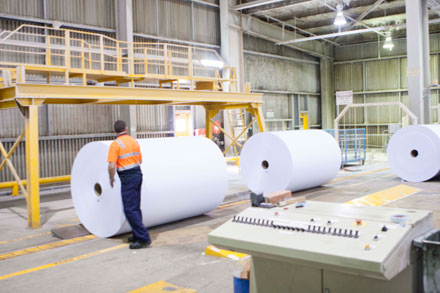
Investment in Australia’s pulp and paper industry needs to grow by at least 20% over the next five years to expand the sector, according to the industry’s 2018 Sustainability Report. Investment this year was $8 billion, while local production of paper and paperboard was 3.251 million tonnes, says the report, produced by the Australian Forest Products Association and consultants Industry Edge. Source: Philip Hopkins for Timberbiz
Key highlights included:
- Production, centred on regional Australia, earned $1.068 billion in export income, displacing about $4.5 billion in imports.
- A total of 95% of wood is certified fibre, giving Australia the fourth largest area of certified forests and plantations in the world after Canada, Russia and the US.
- Production, centred on regional Australia, supports 18,200 direct jobs and more than three times that many across the economy.
- In 2016-17, recycling amounted to 3.059 million tonnes, or 69.6 per cent of all paper.
- Since 2014-15, direct emissions of green house gases were reduced by 5.1%, equivalent to 29,192 cars.
- Energy intensity fell by 5.3%, equivalent to the energy required to power 122,252 houses.
The report said the recycling rate for paper and paperboard declined by 0.7% due to apparent stockpiling of some grades of recovered paper and the rapid growth in pre-packaged good bought through e-commerce.
Europe’s recycling rate, however, rose marginally to 72.3% of consumption, but in the same year the US recovery rate also slipped in a similar manner to Australia to 65.8%.
Australia’s packaging and industrial paper recovery rate (items such as corrugated boxes and cereal boxes) was 76.6% in 2017-18, after accounting for non-recyclable material. Europe’s rate was 73.7%.
AFPA chief executive, Ross Hampton, said Australia’s recovery and recycling of paper and paperboard had risen dramatically over the past 10 to 15 years.
This was due to increasing recovery rates through kerbside collections and commercial and industrial sources, and to big industry investments in paper recycling capacity.
Mr Hampton said most players were finding new ways to enhance sustainability. In 2017, Australian Paper’s Maryvale Mill in the Latrobe Valley, recycled nearly 130,000 cubic metres of the mill’s organic waste into agricultural products for soil remediation and composting.
“The Mill is also the largest base load generator of renewable energy in Victoria,” he said.
To support growth, the AFPA has called for one billion new production trees near major processing facilities, and big investment in a National Bio-futures Industry Development Fund and Bio-products Innovation Hub.





